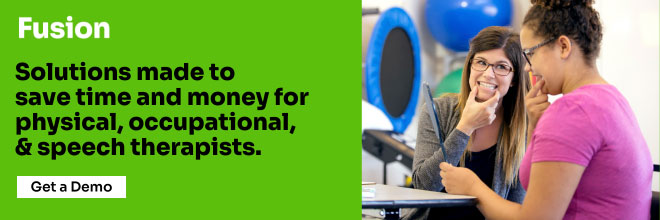Though the difference between sports medicine and physical therapy may not be common knowledge to the public, as a practitioner you know the difference – and probably many of the similarities. But, have you stopped to think about the unique values and philosophies held by sports doctors that can impact therapy practices of all creeds? Here are three mantras to help shake up the way you think about your practice and some quick tips for implementing them at your clinic.
The Best Offense is Good Defense
Most patients begin to see a physical therapist with a referral from their doctor and after some sort of injury has occurred. But you know what they say, the best offense is a good defense? This is one major differentiator between sports medicine and physical rehab. While therapists help get patients up and running again, sports practitioners help them go the distance.
As much as we love our patients as physical therapists, the goal is to never have to see them again, so it’s critical we include preventative measures in interventions. This means providing education and building an understanding of the biomechanics that a patient can use to keep themselves healthy long after they leave your office.
Quick Tips
- Keep printouts ready.
- Invest in teaching models.
- Offer patient portal access.
- Educate kids just as much as their parents and vice-versa.
Get Your Head in the Game
You’re not a mental health provider, but you’ve probably seen the havoc an injury or loss of function can wreak on a patient. This is especially detrimental to the care of athletes who are so used to driving for success and may find themselves struggling with their new limitations. Often, patients may want to push ahead despite your orders. Make sure to pay special attention to the mental state of patients, indicating anything significant in session notes. Without addressing the mental state of your physical therapy patient, long-term outcomes are at risk.
Some Tips
- Maintain a dialogue throughout treatment to help the patient feel more empowered in their journey. Even asking about their concerns can have a major impact.
- Outline your treatment plan and help patients understand consequences of slowdowns. Show progress with visuals like line charts or be able to provide important metrics to showcase a patient’s progress.
- Talk patients through building a support system – either of friends, teammates, family, or other professionals like a counselor.
- Offer resources to help with emotional processing – like a coloring page or thought journal. Get creative. For example, you could even host a virtual yoga and meditation session.
Keeping the Goal in Mind
As professionals, we think we know what’s best. But it can be so easy to get wrapped up in what we think should be the course of action, we don’t stop to consider the wishes of our patients. Is there a big game coming up? Do they need to walk down the aisle in time for their wedding? Maybe they just want to live a pain-free life even if that means giving up cross-country skiing. Considering 70% of patients don’t complete all of their prescribed PT sessions, it’s essential to be aligned with your patient on a common goal.
Some Tips
- Involve patients in goal setting. It should feel like a plan was developed together.
- Utilize SMART goals.
- Continuously check-in with your patient. Gauge how they are feeling about the timeline.
There’s No I in Team
Consisting of a diverse cohort of trainers, dieticians, and more, sports practitioners have the goal of achieving peak performance, which involves the whole body. Even though the physical therapist’s forte is the musculoskeletal system, we need to consider important factors like diet. And, just as important, when a patient is in need of support beyond your scope or expertise, help them access the information and resources they need to continue their journey.
Quick Tips:
- Ask about diet and other lifestyle factors at intake
- Send out a newsletter with facts about and tips for a healthy lifestyle.
- Ensure your patient has easy access to other resources and professionals. Keep a few pamphlets or cards on hand.
The Equipment You Need to Win
As long-term outcomes become more important, not only for the health of patients, but for the financial well-being of therapy clinics, therapists must always be looking for ways to make an impact for their patients. Sports medicine, with so much overlap with physical and occupational therapy, can shed some light on new approaches to our care.
And, just like every good athlete has the equipment for their job, make sure your practice has the tools it needs. From robust reporting that gives you insight into your practice’s performance to note-taking that’s as capable as you are, Fusion can help you do more for your patients.

